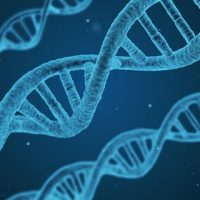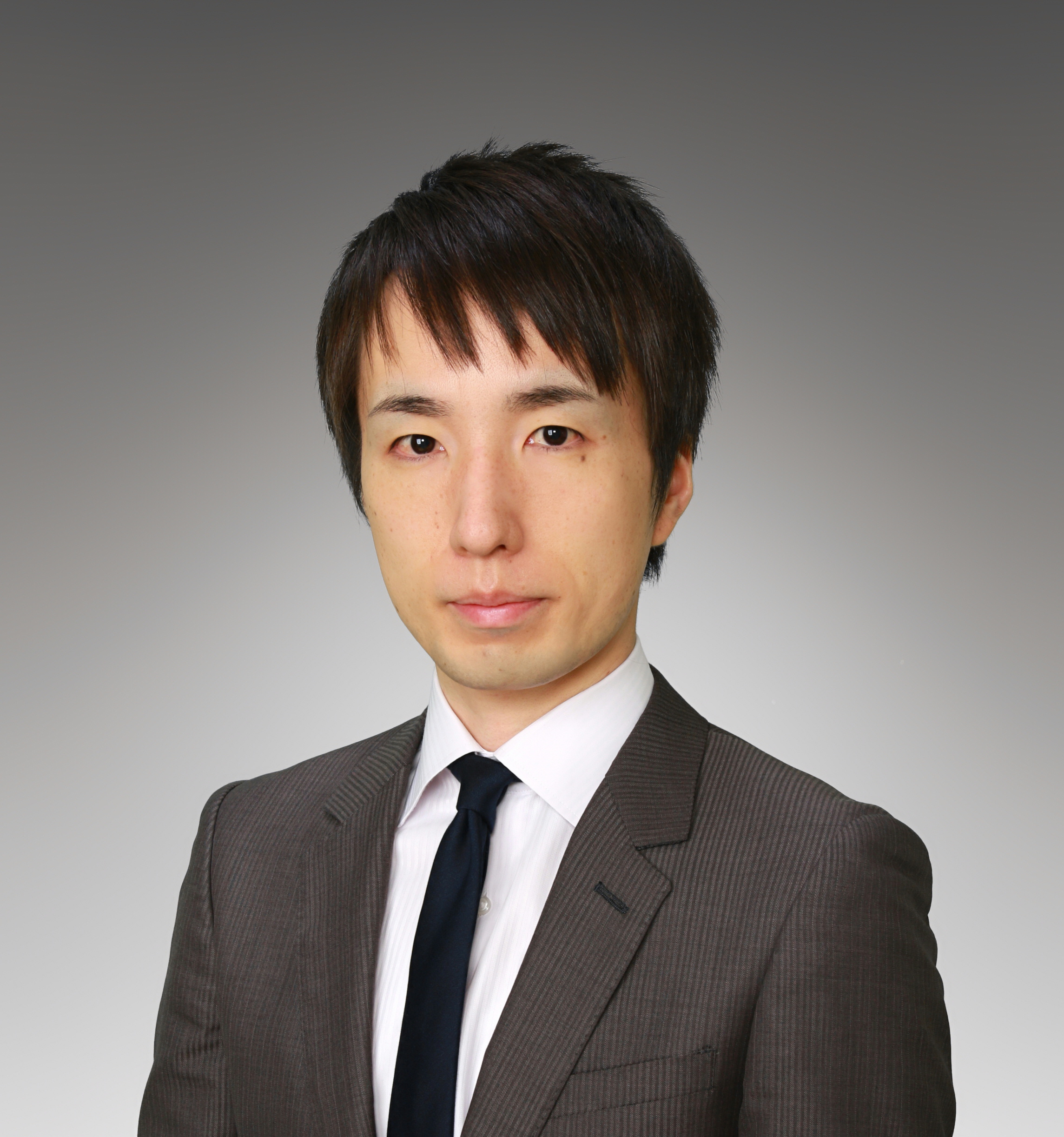Japan Patent Office publishes the Examination Guidelines for Patent and Utility Model.
The parts about "Eligibility for Patent and Industrial Applicability" are as follows.
Case examples of industrial applicability are described on another page (Link).
Examination Guidelines for Patent and Utility Model in Japan
Part III Chapter 1 Eligibility for Patent and Industrial Applicability
(Main Paragraph of Article 29(1) of the Patent Act)
1. Overview
The main paragraph of Article 29(1) of the Patent Act defines that any person who has made an invention which is industrially applicable may obtain a patent therefor. Article 2(1) of the Patent Act defines "invention" as "the highly advanced creation of technical ideas utilizing the laws of nature". An invention which does not comply with this definition shall not be patented. An invention for which a patent is sought shall be industrially applicable even if the patent complies with this definition, since the purpose of the Patent Act is the development of industry (Article 1).
The main paragraph of Article 29(1) of the Patent Act provides the two following points as the patentability requirements:
(i) A statutory "invention" (hereinafter, referred to as "eligibility for a patent" in this chapter) (see 2.)
(ii) An "industrially applicable invention" (hereinafter, referred to as "industrial applicability" in this chapter) (see 3.)
This chapter explains determination on eligibility for a patent and industrial applicability.
In this chapter, an invention complying with the requirements of eligibility for a patent is referred to as a statutory "invention". The word "invention" in the expression "claimed invention" does not mean that the invention complies with the requirements of eligibility for a patent.
2. Determination on Requirements of Eligibility for Patent
The subject of determination on the requirements of eligibility for a patent is a claimed invention.
When a claimed invention is considered as any of (i) to (vi) in 2.1 , an examiner shall determine that the claimed invention does not comply with the requirements of eligibility for a patent. For a claimed invention utilizing computer software, see 2.2.
When there are two or more claims in the claims, an examiner shall determine on requirements of eligibility for a patent for each claim.
The expression "highly advanced" in the definition of the statutory "invention" has been introduced to differentiate the "invention" from "device" under the Utility Model Act. Thus, an examiner may disregard this expression in determining eligibility for a patent.
2.1 List of Subject Matters Not Corresponding to Statutory "Inventions"
To be considered as a statutory "invention", an invention needs to be a "creation of a technical idea utilizing the laws of nature". Since (i) to (vi) shown below are not a "creation of a technical idea utilizing the laws of nature", it is not considered as a statutory "invention".
(i) The laws of nature as such (see 2.1.1)
(ii) Mere discoveries and not creations (see 2.1.2)
(iii) Those contrary to the laws of nature (see 2.1.3)
(iv) Those in which the laws of nature are not utilized (see 2.1.4)
(v) Those not regarded as technical ideas (see 2.1.5)
(vi) Those for which it is clearly impossible to solve the problem to be solved by any means presented in a claim (see 2.1.6)
2.1.1 The laws of nature as such
Since a statutory "invention" shall utilize the laws of nature, the laws of nature as such, like a law of preservation of energy or a law of universal gravitation, are not considered as a statutory "invention".
2.1.2 Mere discoveries and not creations
Since a statutory "invention" shall be a creation, mere discoveries, such as discoveries of natural things (e.g., ore) or natural phenomena, for which an inventor does not create any technical idea with intention, are not considered as a statutory "invention".
However, if things in nature such as chemical substances or microorganisms have been isolated artificially from their surroundings, those are creations and considered as a statutory "invention".
2.1.3 Those contrary to the laws of nature
If a matter necessary to specify a claimed invention (hereinafter referred to as "a matter specifying the invention" in this part) involves any means contrary to the laws of nature like a law of preservation of energy (e.g., the so-called "perpetual motion"), the claimed invention is not considered as a statutory "invention".
2.1.4 Those in which the laws of nature are not utilized
When a claimed invention is considered as any of (i) to (v) shown below, the claimed invention is not deemed to utilize the laws of nature, and thus, is not considered as a statutory "invention" (see Examples 1 and 2).
(i) Any laws other than the laws of nature (e.g., economic laws)
(ii) Arbitrary arrangements (e.g., a rule for playing a game as such)
(iii) Mathematical formula
(iv) Mental activities of humans
(v) Those utilizing only (i) to (iv) (e.g., methods for doing business as such)
Even if a part of matters specifying the invention stated in a claim utilizes the laws of nature, when it is determined that the claimed invention as a whole does not utilize the laws of nature, the claimed invention is deemed as not utilizing the laws of nature (see Examples 3 to 6).
On the contrary, even if a part of matters specifying the invention stated in a claim does not utilize the laws of nature, when it is determined that the claimed invention as a whole utilizes the laws of nature, the claimed invention is deemed as utilizing the laws of nature.
The characteristic of the technology is to be considered in determining whether a claimed invention as a whole utilizes the laws of nature.
(Examples of those contrary to the laws of nature)
Example 1: Computer programming languages (applicable to (ii) in the above)
Example 2: A method of collecting money for an electricity bill or a gas bill etc., by rounding off the total amount to be collected to the nearest 10 yen unit (applicable to (v) in the above)
Example 3: A method of plying a container vessel to transport a large amount of beverages from a region where crude oil is expensive and beverages are inexpensive to another region where crude oil is inexpensive and beverages are expensive, and after unloading the beverages, transporting a large amount of crude oil instead of beverages to the homeward voyage
Example 4: A method of billboard advertising using utility poles, characterized by forming in advance groups A, B, C, D, ... with a prescribed number of poles in each group, placing a holding frame to post thereon a billboard for each pole, and posting the billboards in each group on holding frames placed to poles in each group in circulation in a certain time interval
Example 5: A method of playing shogi (Japanese chess) between players remote from each other, the method comprising: a step of transmitting a move of one player to the other player through a chat system in the one player's turn; and a step of transmitting a move of the other player to the one player through the chat system in the other player's turn, the steps being repeated alternately
(Explanation)
It does not fall under “the invention” since the method described above applies only artificial arrangements as a whole where two players remote from each other play alternately although the chat system is used as the technical means.
Example 6: A method of playing a game in which cards with nn (n is an odd number that is three or more) numbers thereon are distributed to each player, each player marks a number drawn by a computer if his/her card includes the drawn number, and a player who first marks all numbers in a vertical, horizontal or diagonal row can be a winner
(Explanation)
It does not fall under “the invention” since the method described above applies only the specific rules of the game as a whole where each player marks a drawn number if the player has such number in the card and the player who first marks all numbers in a vertical, horizontal or diagonal row can be a winner, although the drawing is carried out by the computer as the technical means.
2.1.5 Those not regarded as technical ideas
(1) Personal skill (which is acquired through personal experience and cannot be shared with others as knowledge due to lack of objectivity)
Example 1: A method of throwing a split-fingered fast ball characterized in the way of holding the ball in fingers and throwing the same
(2) Mere presentation of information (where the feature resides solely in the content of the information, and the main object is to present information)
Example 2: A written manual for instructing an operation of a machine or directing a use of a chemical substance
Example 3: An audio CD the feature of which resides solely in music recorded thereon
Example 4: Image data taken with a digital camera
Example 5: A program of an athletic meeting made by a word processor
Example 6: A computer program list (mere representation of computer programs by means of printing them on paper, displaying them on a screen, etc.)
If a technical feature resides in presentation of information (presentation per se, means for presentation, a method for presentation, etc.), a claimed invention is not considered as mere presentation of information.
Example 7: A test pattern for use in checking the performance of a television set
(Explanation)
The technical feature resides in the pattern per se.
Example 8: A plastic card on which information is recorded with characters, letters and figures embossed on it
(Explanation)
The information is printed on the plastic card by emboss processing and the printed information on the card is copied by affixing the card on paper. The technical feature resides in the means for presentation.
(3) Mere aesthetic creations
Example 9: paintings, carvings, etc.
2.1.6 Those for which it is clearly impossible to solve the problem to be solved by any means presented in a claim
Example: A method of preventing explosion in a volcano by forming balls of neutron-absorbing material (e.g., boron) covered with substance having a relatively high melting temperature (e.g., tungsten) and throwing them into the volcanic vent
(Explanation)
This invention allegedly works on the assumption that volcanic explosion is caused by nuclear fission substances like uranium at the bottom of the volcanic vent.
2.2 Points to consider in examination on an invention utilizing computer software
(1) Those utilizing the laws of nature as a whole and being considered as a "creation of a technical idea utilizing the laws of nature" (e.g., (i) or (ii) shown below) constitute a statutory "invention" without being examined from a viewpoint of computer software, even though they utilize computer software (Note).
(i) Those concretely performing control of an apparatus (e.g., rice cooker, washing machine, engine, hard disk drive, chemical reaction apparatus, nucleic acid amplifier), or processing with respect to the control
(ii) Those concretely performing information processing based on the technical properties such as physical, chemical, biological or electric properties of an object (e.g., rotation rate of engine, rolling temperature, relation between gene sequence and expression of a trait in a living body, physical or chemical relation of bound substances)
(Note) "Computer software" means a program related to the operation of a computer or any other information that is to be processed by a computer equivalent to a program (same as "program etc." in Article 2(4), and hereinafter also referred to as "software").
A "program" means a set of instructions given to a computer which are combined in order to produce a specific result (Article 2(4)).
Those "equivalent to programs" mean those which are not direct instructions to computers and thus cannot be called programs, but have similar properties to programs in terms of prescribing computer processing. For example, "data structure" (a logical structure of data that is expressed by correlations between data elements) can be equivalent to a program.
Computer software for causing a computer to execute a procedure of a method, which is a "creation of a technical idea utilizing the laws of nature" and thus constitutes a statutory "invention", or a computer or system for executing such a procedure is normally a creation of a technical idea utilizing the laws of nature as a whole, and thus, it constitutes a statutory "invention".
(2) There is possibility for an invention to be considered as a "creation of a technical idea utilizing the laws of nature" where the invention is made having an intention of utilizing computer software as a whole such as software used in doing business, in playing a game or in calculating a mathematical formula, even though the invention is made related to a method for doing business, playing a game or calculating a mathematical formula, which is not determined to correspond to (i) or (ii) stated above.
An examiner shall examine whether such an invention is to be considered as a "creation of a technical idea utilizing the laws of nature" from a viewpoint of computer software. In other word, an examiner shall examine from this viewpoint, because those utilizing computer software are "creation of a technical idea utilizing the laws of nature" if "information processing by the software is concretely realized by using hardware resources (Note)".
For inventions relating to a method for doing business, playing a game or calculating a mathematical formula, since there are cases in which the claimed invention a part of which utilizes a computer software is determined as not utilizing the laws of nature when considered as a whole, whether they are "creation of a technical idea utilizing the laws of nature" shall be carefully examined (see Examples 5 and 6 of “2.1.4 Those in which the laws of nature are not utilized”).
(Note) Hardware resources include a physical device or physical element that is used in processing, operation, or implementation of a function. For example, they include a computer as a physical device, and a CPU, memory, input device, output device, or physical device connected to a computer, which are components thereof.
3. Determination on Industrial Applicability Requirements
The subject of determination on the industrial applicability requirements is a claimed invention.
When a claimed invention is considered as any of (i) to (iii) in 3.1 , an examiner shall determine that the claimed invention does not comply with the industrial applicability requirements.
When there are two or more claims in the claims, an examiner shall make examination of the industrial applicability requirements for each claim.
Here, the word "industry" is interpreted in a broad sense, including manufacturing, mining, agriculture, fishery, transportation, telecommunications, etc.
3.1 List of industrially inapplicable inventions
An invention considered as any one of (i) to (iii) shown below does not comply with the industrial applicability requirements.
(i) Inventions of methods of surgery, therapy or diagnosis of humans (see 3.1.1)
(ii) Commercially inapplicable inventions (see 3.1.2)
(iii) Obviously impracticable inventions (see 3.1.3)
3.1.1 Inventions of methods of surgery, therapy or diagnosis of humans
Methods of surgery therapy or diagnosis of humans have been termed "medical activity" and are normally practiced by medical doctors (including those who are directed by medical doctors, hereinafter referred to as "medical doctors").
A method considered as any one of (i) to (iii) shown below is considered as an "invention of methods of surgery, therapy or diagnosis of humans".
(i) Methods of surgery of humans (see (1))
(ii) Methods of therapy of humans (see (2))
(iii) Methods of diagnosis of humans (see (3))
The following methods of (a) and (b) are included in "inventions of methods of surgery, therapy or diagnosis of humans".
(a) Methods for contraception or delivery
(b) Methods for processing samples that have been extracted from a human body (e.g., a method of dialyzing blood) or analyzing the samples during the process on the presumption that the samples are to be returned to the same body for therapy (except for the methods described in 3.2.1(4)b)
Even if methods of surgery, therapy or diagnosis are practiced on animals in general, unless it is clear that the methods practiced on humans are explicitly excluded, the methods are deemed as being "inventions of methods of surgery, therapy or diagnosis of humans".
(1) Methods of surgery of humans
Methods of surgery of humans include the following:
(i) Methods for surgical treatment (such as incision, excision, centesis, injection and implant)
(ii) Methods of using (e.g., inserting, moving, maintaining, operating and extracting) a medical device (e.g., a catheter or an endoscope) inside the human body (excluding inside the mouth, inside the external nostril, and inside the external ear canal)
(iii) Preparatory treatment for surgery (e.g., anesthetic treatment for surgery and method of disinfecting skin before injection)
Cosmetic methods having surgical operations whose purpose is not therapeutic or diagnostic are also considered methods of surgery of humans.
(2) Methods of therapy of humans
Methods of therapy of humans include the followings:
(i) Methods of administrating medicine or giving physical treatment to a patient for curing or restraining a disease
(ii) Methods of implanting substitute organs such as artificial internal organs or artificial limbs
(iii) Methods of preventing a disease (e.g., methods of preventing tooth decay or influenza)
Methods of treatment for the maintenance of physical health (e.g., methods of massage or shiatsu therapy) are also considered to be methods of preventing a disease.
(iv) Preparatory treatment for therapy (e.g., method for arranging electrodes for electrical therapy)
(v) Supplemental methods for improving treatment effects (e.g., rehabilitation methods)
(vi) Methods for nursing associated with treatment (e.g., methods to prevent bedsores)
(3) Methods of diagnosis of humans
Methods of diagnosis of humans include methods of judging for the medical purposes the physical condition of a human body as indicated in (i) or (ii) below:
(i) Physical condition of a human body such as conditions of diseases and physical health or the mental condition of a human body
(ii) Prescription or treatment/surgery plans based on the above (i)
Example: Methods of judging whether the patient has had a stroke by observing an image obtained by an MRI scan.
3.1.2 Commercially inapplicable inventions
An invention which corresponds to the invention indicated in (i) or (ii) below is considered to be a "commercially inapplicable invention".
(i) An invention applied only for personal use (for example, a method of smoking)
(ii) An invention applied only for academic or experimental purposes
3.1.3 Obviously impracticable inventions
An invention which cannot be practically implemented is not considered to be an "obviously impracticable invention" even if it works in theory.
Example: A method for preventing an increase in ultraviolet rays associated with the destruction of the ozone layer by covering the whole earth's surface with an ultraviolet ray-absorbing plastic film.
3.2 Types of industrially applicable inventions
In principle, an invention which does not correspond to any one of (i) to (iii) in 3.1 is considered to be an industrially applicable invention. Inventions not considered to be a "method of surgery, therapy, or diagnosis of humans" and a "commercially inapplicable invention" include the following:
3.2.1 Types of methods not considered to be a "method of surgery, therapy or diagnosis of humans"
(1) Product such as medical device or medicine
A medical device or a medicine is a product, and is not considered to be a "method of surgery, therapy, or diagnosis of humans." A product combining them is also not considered to be a "method of surgery, therapy, or diagnosis of humans."
(2) Method for controlling the operation of a medical device (Note)
A method for controlling the operation of a medical device is not considered to be a "method of surgery, therapy, or diagnosis of humans" as long as the function of the medical device itself is represented as a method. The "method for controlling the operation of the medical device" here may include not only a method for controlling the internal operation of the medical device but also a functional or systematic operation provided to the medical device itself, such as the moving, opening, and/or closing of an incising means in accordance with an operating signal, the emission and/or receiving of a radioactive ray, an electromagnetic wave, a sound wave, or the like.
(Note) A method including any one of the following steps (i) or (ii) is not considered to be a "method for controlling the operation of a medical device."
(i) An action of a medical doctor (for example, a step where a medical doctor operates a device in order to provide medical treatment in accordance with a symptom)
(ii) A step with an influence on the human body by a device (for example, the incision or excision of a specific site of patient’s body by a device or the irradiation of radiation, electromagnetic wave or sound wave by a device)
(3) Method for gathering various kinds of information from the human body by measuring structures and functions of organs in the human body
The methods indicated in (i) or (ii) below, which are intended to collect various types of data about a human body by measuring structures or functions of organs in the human body, is not considered to be a "method of diagnosis of humans".
(i) Method of extracting samples and data from the human body, or methods of analyzing, e.g., comparing such samples and data with standards, by utilizing samples and data extracted from the human body (see the following Example 1 to Example 5).
(ii) Preparatory treatment for measuring structures or functions of various organs of the human body (see the following case 6)
Except the case where it includes the step indicated in (a) or (b) below of judging for medical purposes.
(a) Physical condition of a human body such as conditions of diseases and physical health or the mental condition of a human body
(b) Prescription or treatment or surgery plans based on the conditions of (a)
Also, even if corresponding to such method, the methods that include steps corresponding to methods of surgery or therapy of humans are deemed to be "methods of surgery or therapy of humans."
(Examples of methods not considered to be a "method of surgery, therapy or diagnosis of humans")
Example 1: A method for an influenza test by extracting oral mucous membranes with a cotton bud
Example 2: A method for capturing the image of a lung by X-ray irradiation to the chest
Example 3: A method for measuring the body temperature by inserting an electronic ear thermometer into the external ear canal
Example 4: A method for judging the sugar level in urine by dipping a test strip in a collected urine sample, and comparing the color of the test strip with colors on a color chart
Example 5: A method of examining the susceptibility of the examinee to hypertension by determining the type of base on the nth line of the base sequence of the X gene of the examinee and comparing the base with a standard in which when the base type is A the susceptibility is low, and when the type is G the susceptibility is high
Example 6: A method of preventing uneven smear of jelly for ultrasonography that is spread on the body
(4) Method for treating samples that have been extracted from the human body
A method for treating samples that have been extracted from the human body (e.g., blood, urine, skin, hair, cells, or tissue) or a method for gathering data by analyzing such samples such as the following (i) or (ii) is not considered to be a "method of surgery, therapy, or diagnosis of humans."
(i) Method for the presumption that the samples extracted from the human body are not to be returned to the same body
(ii) Method for the presumption that the samples extracted from the human body are to be returned to the same body such as any one of the followings (ii-1) to (ii-4):
(ii-1) A method for manufacturing a medicinal product (e.g., blood preparation, vaccine, genetically modified preparation and cell medicine) by utilizing raw material collected from a human body
(ii-2) A method for manufacturing a medical material (e.g., an artificial substitute or alternative for a part of the human body, such as an artificial bone, a cultured skin sheet, etc.) by utilizing raw material collected from a human body
(ii-3) A method of manufacturing an intermediate product for a medicinal product or a medical material (e.g. methods for differentiation and induction of the cells, methods for separation and purification of the cells) by utilizing raw material collected from a human body
(ii-4) A method of analyzing a medicinal product or a medical material, or an intermediate product thereof which is manufactured by utilizing raw material collected from a human body
3.2.2 Commercially inapplicable inventions
An invention concerning marketable or tradable subject matter is not considered to be "commercially inapplicable".
For example, a "method of waving hair" can be used for a commercial purpose in the beautician field while being personally used, is not considered to be an "invention applied only for personal use." indicated in 3.1.2 (i). Likewise, a "kit for scientific experiments," which is used in experiments at school, is not considered to be an "invention applicable only for academic or experimental purposes" indicated in 3.1.2 (ii), as it is marketable and tradable.
4. Procedure of Examination for Determining Eligibility for Patent and Industrially Applicability
(1) If the examiner determines that the claimed invention does not fulfill the requirements of the provision of Article 29(1) main paragraph based on the 2. and 3. , the reasons for refusal shall be notified.
The applicant can amend the claims by filing the amendments to be made to the claims and make an argument or clarification by filing the arguments against the notice of reasons for refusal stating that the claimed invention cannot be patentable since it does not satisfy the provision of Article 29(1) main paragraph.
When the examiner comes to be convinced that the claimed invention fulfills the requirements of the provision of Article 29(1) main paragraph by the amendments, argument or clarification, the reasons for refusal are overcome. Otherwise, the examiner shall notify a decision of refusal based on the reasons for refusal stating that the claimed invention cannot be patentable since it does not satisfy the provision of Article 29(1) main paragraph.
(2) The examiner shall explain the specific reasons in determining that the claimed invention cannot be patentable under the provision of Article 29(1) main paragraph in notifying the reasons for refusal or issuing the decision of refusal. It is not appropriate to state only "does not fulfill the requirements for eligibility for a patent," or "does not fulfill the requirements for industrial applicability" etc. since it is difficult for the applicant to make the effectual argument and understand the direction of an amendment for overcoming the reasons for refusal.

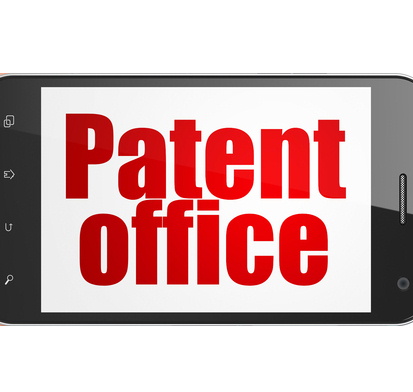
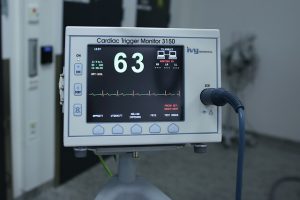

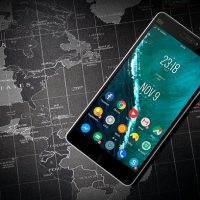

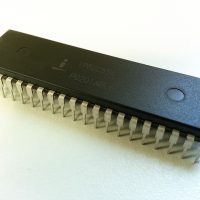

![[Medical device] Firm Ranking of the number of Japanese granted patents in the Medical device field in 2020](https://japanese-patent.com/wp-content/uploads/2019/01/Medicaldevice-200x200.jpg)
